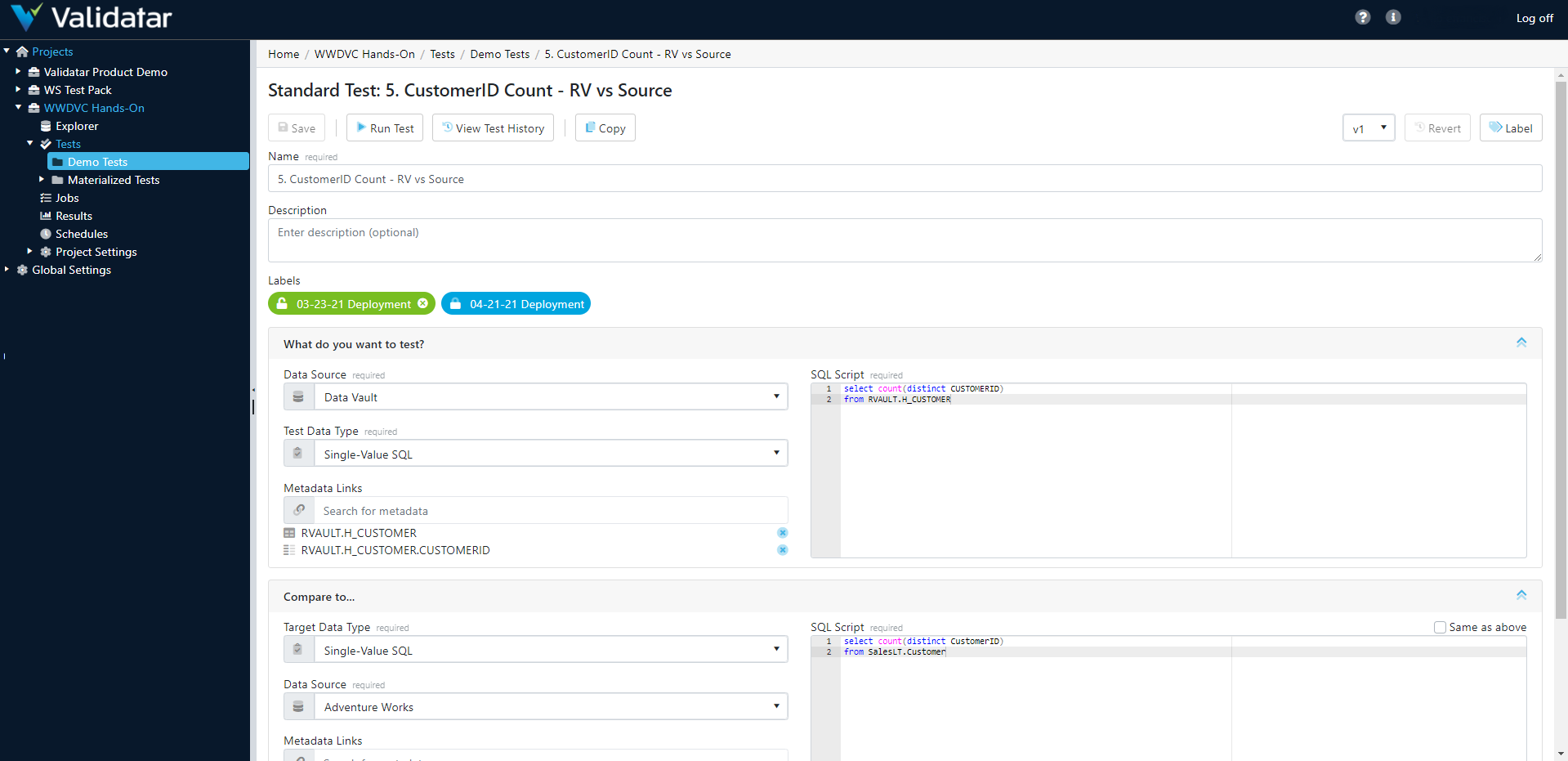Overview
Labels are a way to group Validatar objects. As items in your development environment change, new deployments happen, and test cases must be updated, labels can be used to identify objects that are a part of the same deployment.

When to Use Labels
There are many reasons why you would choose to use labels. The main two being:
- The ability to identify a version of a set of tests.
- Let's say you have a sprint release where a large number of changes will be delivered. Creating a label for each sprint will allow you to go back in time to refer to every test, template test, and job involved in that sprint.
- To distinguish your labels, your label name might include versioning information such as the version number, delivery date, the development ticket number.
- The ability to move a set of tests from one Validatar environment to another.
- The simplest example here is if you've finished testing in your Validatar QA environment and you're ready to deploy your code to Production, having a label for that deployment makes it easier to move the QA tests you've completed to your Validatar Production environment to be executed.
Export Note
When exporting Validatar objects by label selection, you can not exclude any objects during the import. Be sure to include only what you plan to import in your XML document.